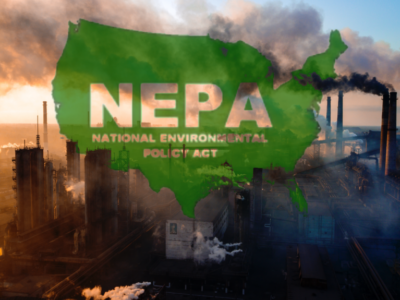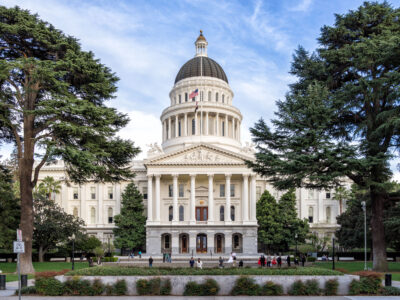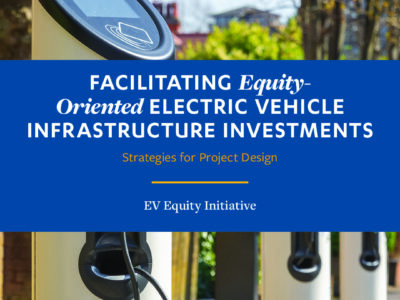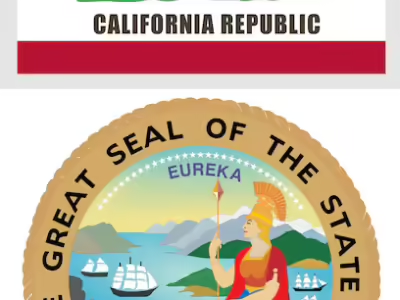NEPA in the Supreme Court (Part III)
Our guide to understanding how causation applies for NEPA reviews.
In prior posts, we’ve discussed the potential importance of the Seven Counties case, how the petitioners have made very aggressive arguments to shrink the scope of NEPA, arguments based on very narrow understandings of the kinds of causation that should be considered under NEPA, and how those arguments are inconsistent with the statute and would lead to absurd results. In our final posts, we’ll talk about how causation should apply under NEPA, including the concep...
CONTINUE READINGTrump-Proofing Time at the California Legislature?
Governor Newsom has called a special session for December 2nd. How can California lawmakers ensure California’s climate and environmental progress in the years ahead?
During the last Trump administration, California emerged as a serious counterweight to federal government backsliding on climate and the environment, and last week, some California lawmakers publicly recommitted to resisting future Trump administration efforts to reduce environmental and climate protections. On November 7, Governor Newsom issued a proclamation calling the Legislature into a special session (the second in the past three months!) to consider legislatio...
CONTINUE READINGNEPA in the Supreme Court (Part II)
Here's why the Supreme Court should reject radical arguments for limiting environmental impact statements.
Our last post explained the background of the Seven Counties NEPA case, which is currently pending in the Supreme Court. Today, we discuss the radical arguments that have been made in the case and why they should be rejected. NEPA requires that agencies consider the environmental effects of their projects, but the petitioners raise hairsplitting arguments to exclude obvious effects due to technicalities. We consider their arguments one by one. More detailed analysis ca...
CONTINUE READINGNEPA in the Supreme Court (Part I)
A pending case could mean radical retrenchment of a foundational environmental law.
In what could turn out to be another loss for environmental protection in the Supreme Court, the Court is about to decide a major case about the scope of the National Environmental Policy Act of 1969 (NEPA). The case, Seven County Infrastructure Coalition v. Eagle County, has important implications for issues such as whether NEPA covers climate change impacts. The same groups that succeeded in drastically cutting back on federal wetlands jurisdiction a few years ago are ...
CONTINUE READINGNew Report: Equity-Oriented EV Infrastructure Development
Strategies for embedding community input in project design.
This is the second in a series of posts on CLEE's new set of resources on Equitable Climate Infrastructure Investment. The national EV market could grow nearly tenfold by 2030. Many state vehicle emissions standards (led by California) are driving a transition to zero-emission vehicles over the coming decade, and state, federal, and private sector dollars are increasingly flowing into EV infrastructure across the U.S. However, EV charging access faces significant barr...
CONTINUE READINGPresident-Elect Trump vs. California: What Lies Ahead?
Will It Be Environmental Law & Policy Deja Vu All Over Again? Or Even Worse?
Californians who care about the environment likely--and justifiably--feel whipsawed this week. Former President Trump (#45) has re-emerged as President-elect Trump (#47), interrupted by the intervening four years of the Biden-Harris presidential administration. (Actually, this presidential whipsaw has been going on for decades: think Bush Sr.-Clinton-Bush Jr.-Obama-Trump-Biden-Trump redux.) In general, California's progressive environmental laws and policies since...
CONTINUE READINGThe Dangerous Hypocrisy of Elon Musk
Tesla CEO Elon Musk wants to slash government and regulations for a Trump administration—even though California regulations helped build his companies.
Our chances of helping avoid the most catastrophic climate disruptions just dimmed dramatically. Donald Trump’s victory and self-declared mandate means a lot of things—among them, that crucial climate and environmental policies are threatened like never before. There will be plenty to say in coming days about what this means for America’s role in the world and the policy successes of the Biden-Harris administration. For now, I want to dwell on one dude: Elon...
CONTINUE READINGSmall, Medium, and Large Things to Do Today
Three ideas for simple, personal, and tangible ways to react to the outcome of the 2024 presidential election.
Many folks this morning are feeling anticipatory grief over what's to come in the second Trump administration. This is perhaps especially true for those of us who work on solutions to climate change, an issue that doesn't have four years to burn away. I'm not yet at the stage of crafting particularly strategic plans in response, though that work has already begun and is underway; instead, I'm making lists of small, medium, and large things to do to counteract my first ...
CONTINUE READINGThe Morning After
Given Trump’s victory, what can be done to save the planet?
We are about to have in the White House a man who thinks solar panels kill bunnies, and windmills cause cancer – a man who rolled back over a hundred environmental regulations in his first term of office. This a dreadful setback that could not have come at a worse time. The climate and biodiversity crises are becoming more urgent by the day. But we’ve been here before, and we know what needs to be done. Twice before in this century, enemies of environmental ...
CONTINUE READINGCalifornia Must Not Abandon its Climate Leadership
California’s Low Carbon Fuel Standard has been successful. CARB should update the program without undermining its fundamental features.
On November 8, the California Air Resources Board, or CARB, is slated to consider approving amendments to California’s Low Carbon Fuel Standard. The program has been so successful in replacing high carbon petroleum-based fuels with lower emissions vehicle fuels that interest groups from all sides of the political spectrum have come forward to demand radical changes that they argue will fix problems. Meanwhile, CARB staff is proposing several amendments that will up...
CONTINUE READING











